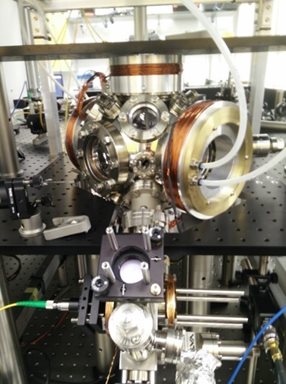 What is the technology?
What is the technology?
This technology enables the development of sensitive sensors.
NPL has invented a novel way of conducting interferometry, a measurement method using the phenomenon of interference of waves. It is based on a continuous matter wave beam splitter which allows multiple laser beams to be arranged to form waveguides.
Atomic interferometers are similar to optical interferometers, except they use matter waves instead of optical ones. All interferometers rely on the formation of interference fringes due to interference between partial waves, which propagate along different pathways. The spatial position of the interference fringes depends strongly on relative phases of the interfering partial waves, which makes interferometers very sensitive to different perturbations. Atoms, compared to massless photons, have relatively large mass, so atom interferometers are very sensitive to the gravity, inertial and electromagnetic forces. For that reason, atom interferometers are used now for different inertial quantum sensors, like gravimeters, accelerometers and gyroscopes. Most existing atom interferometers are using laser-cooled atomic clouds, which are free falling in gravity inside vacuum chambers.
At NPL we are working on developing integrated optically guided atomic interferometers, based on all-optical atom chips. Such interferometers should provide compactness of quantum inertial sensors without compromising their sensitivity and accuracy.
What are the benefits?
- The unique waveguide atomic interferometer approach offers significant benefits over competing technologies as it enables extremely sensitive sensors
- It can be engineered into a small sized form factor and is rugged enough for reliable performance outside the laboratory
Who will be interested?
It is inherently suitable for exploitation in a range of products, such as sensors, at an affordable price. For example, transportable precise gravimeters used in civil engineering, geological surveys, earth studies and control of sea levels and climate changes. It can also be used in the application of inertial sensors for inertial navigation of vehicles, especially in absence of other means for navigation.
NPL is looking for partners to help us commercialise this technology.